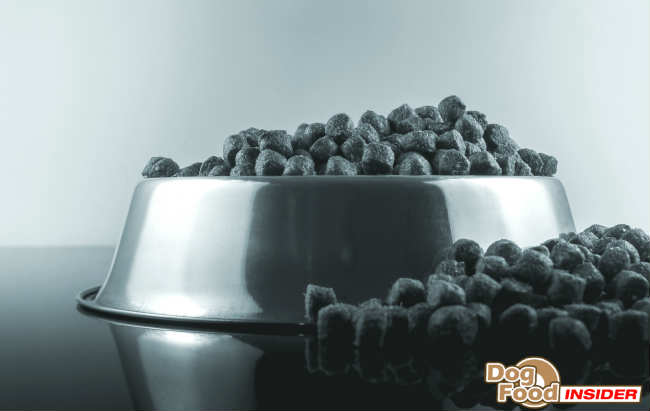
This post may contain affiliate links. We are compensated for referring customers to our affiliate partners.
When it comes to preserving your dog’s health, the best thing you can do for him is to provide him with a high quality dog food. If you pay a visit to your local pet store, however, you will find that there are dozens of different dog food brands and formulas to choose from. So how do you know which brands are high-quality and which are not? Below you will find tips for evaluating different dog food brands and formulas so you can choose a high-quality food for your dog.
Where to Begin
When you are shopping for a high-quality dog food for your pet one of the best places to begin your search is in looking for the AAFCO statement of nutritional adequacy. The American Association of Feed Control Officials (AAFCO) performs quality tests on commercial dog food brands and, if the dog food is formulated to meet the basic nutritional needs of dogs, the product is give the AAFCO seal of approval. The AAFCO statement of nutritional adequacy reads something like the following…
“Animal feeding tests using AAFCO procedures substantiate that [Pet Food Brand] provides complete and balanced nutrition for maintenance of adult dogs.”
If the food does not carry this label, it is not likely to be of high-quality.
Check the Ingredients List
Once you’ve determined that the dog food in question meets AAFCO standards for nutritional adequacy you should evaluate the ingredients used in the food. The most important thing you need to know about reading dog food labels is that ingredients are listed in descending order by volume – the items at the beginning of the list are present in the greatest quantities. What does this mean for you? When you check the ingredients list for any given dog food, you want to see high-quality, natural ingredients like meat, whole grains, and vegetables at the beginning. High-quality dog foods will name a healthy source of protein like chicken or fish as the first ingredient while low-quality dog foods will have animal by-products or grains as the first ingredient.
When you are reading the ingredients list for dog food, you may come across ingredients labeled “chicken meal” or “lamb meal.” At first glance, you may be tempted to think that these ingredients are bad. In reality, high-quality meat meals can actually be much higher in protein than whole protein sources like chicken and lamb. Meat meal is produced by cooking the meat – this removes much of the moisture content, thereby concentrating the protein. For example, whole chicken contains about 70% water and only 18% protein whereas chicken meal contains 10% water and 65% protein. High-quality dog foods may contain meat meals from named sources (like chicken, beef, and lamb) while low-quality dog foods will contain meat byproduct meals (like chicken byproduct meal or poultry meal) or meat meals from unnamed sources (like animal meal or meat meal).
Look for Harmful Ingredients
After you’ve checked the ingredient list to make sure that the first ingredients are of high quality you then need to look for potentially harmful ingredients. Artificial preservatives like BHT, BHA, and sodium nitrite can be dangerous for pets – they have been linked to increased risk for cancer and other health problems. You should also avoid artificial flavors like corn syrup and artificial colors or dyes because these ingredients have no nutritional value. High-quality dog foods will not have these ingredients on their ingredient list but low-quality dog foods may have several or all of these ingredients listed.
Check for Artificial Fillers
In addition to checking the ingredients list for harmful ingredients you should also be on the lookout for artificial fillers. Fillers include fibrous ingredients that are added to the food to increase its bulk without adding much nutritional value – commercial pet food manufacturers use fillers to reduce their costs in producing the food. Some examples of fillers you might find in low-quality dog foods include rice bran, corn bran, hulls, and wheat mill run. It is important to note that dogs do require some source of dietary fiber in their food, but it should come from whole grains and vegetables rather than fillers.
Avoid Common Allergens
You may be surprised to learn that food allergies are actually very common in dogs. The top food allergens you are likely to find in pet foods include chicken, lamb, beef, corn, soy, wheat, egg, and dairy. The most common symptoms of food allergies in dogs include dry, itchy skin; vomiting or diarrhea; frequent or obsessive licking; and biting the paws. To prevent food allergies, you may want to avoid dog foods that are made with corn, soy, wheat, and dairy products. If your dog still shows symptoms of an allergic reaction or food intolerance, try eliminating the other allergens one at a time until you figure out which one is causing the problem. It is possible to find commercial dog food formulas made without any of these allergens.
Final Tips and Recommendations
Commercially prepared dog food is the sum of its parts – if it is made with high-quality, natural ingredients then it will be a high-quality source of nutrition for your dog. If the food is made with low-quality ingredients and fillers, it will not provide good nutrition for your dog. Feeding your dog a high-quality dog food is incredibly important for his health and wellbeing. Not only will it provide him with the energy his body needs, but the vitamins and minerals in his food will help to keep his skin and coat healthy as well. If you care about your dog and want to see him live a long and healthy life you will take the time to pick out a high-quality dog food for him by following the tips provided in this article.
